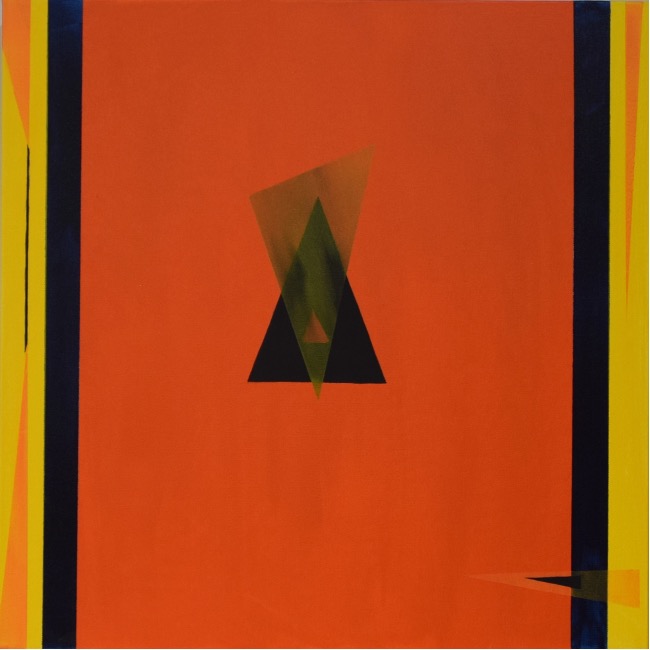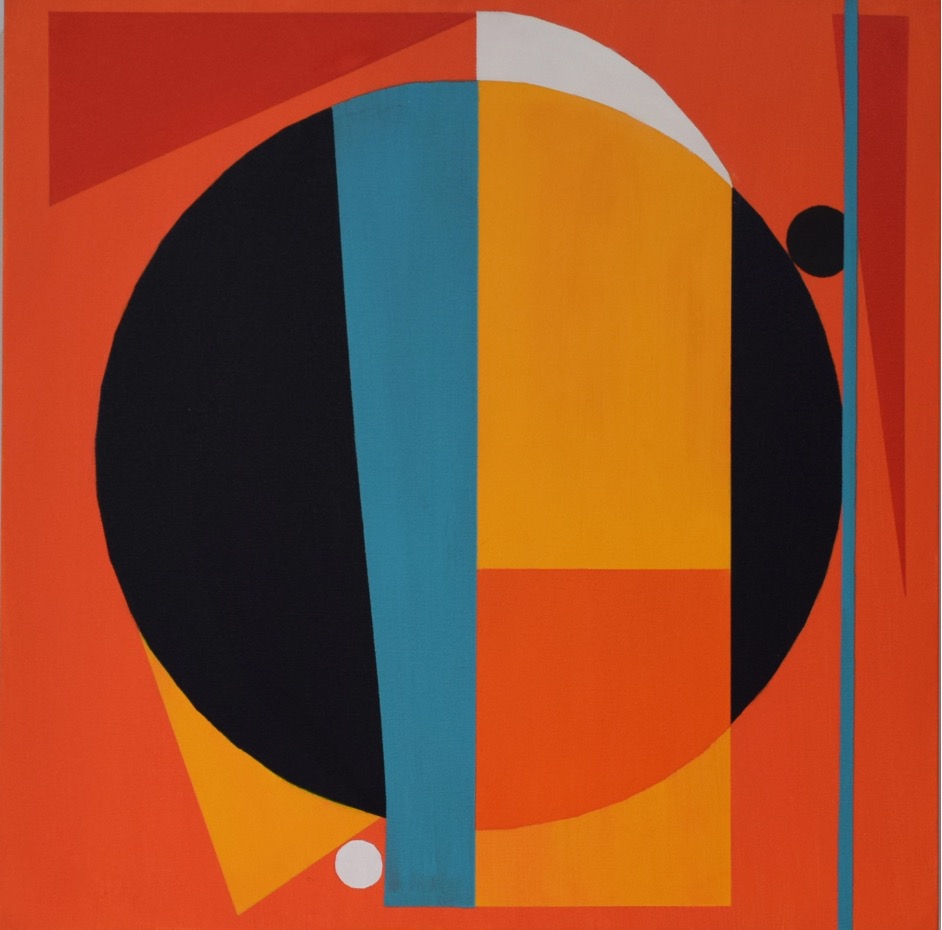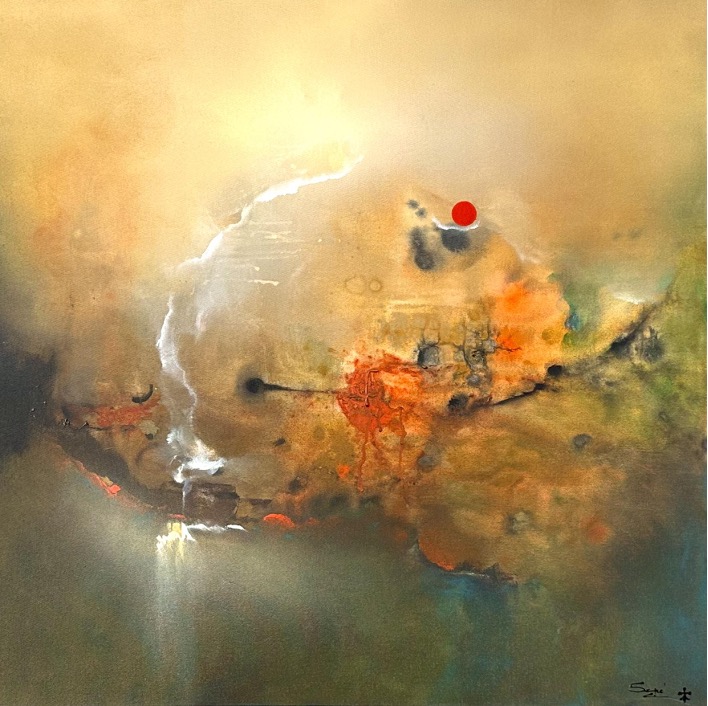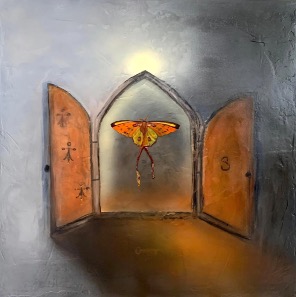YAMILET SEMPÉ: REVEALING THE MYSTICAL (PART 1)


Yamilet Sempé is an oddity in the fine arts, beginning with her identity. Her nationality spans three nations – Cuba, France, and the United States – each leaving their own indelible cultural mark on her. Yet, through each of these phases of her life, she remains indisputably individual, seemingly impervious to external trends. This permeates her work, which now finds itself amidst a flourishing of interest alongside Sempé’s emergence as a recognized artist.
Her enigmatic essence in both her work and her persona has attracted an international base of collectors and can be subtly discovered in traces from the very start of her artistic journey, one that paralleled her intriguing personal journey through life. This journey began in Cuba, laying a foundation of diverse roots that bridged European and North American culture, a framework that would define the rest of her career.
Sempé was born on October 29, 1970, in Matanzas, a city known for its cultural richness in writers, musicians, and painters of the likes of Rafael Soriano, Esteban Chartrand, Osvaldo Gutierrez, and María Magdalena Campos-Pons. There her family was well-entrenched in its social and artistic scenes. From her earliest days, Sempé was immersed in a vibrant community of creatives who regularly frequented her family home. Among them, the award-winning Cuban musician Ildefonso Acosta was one frequent guest at her family’s gatherings where music and lively, stimulating discussions were common.
Most significantly, Sempé’s first painting lessons emerged from this scene in her youth while she was being mentored by the accomplished Cuban painter Modesto García (1930-2016), a graduate of the prestigious San Alejandro Fine Arts School and another family friend. This mentorship was also her first serious exposure to formal visual arts and shaped her initial artistic instincts and themes, ultimately producing what would become the first established series of her career: her horses.

Sempé continues to revisit the series decades later, now with a distinctly more spectral approach. Reaching back through the depths of the ages, she infuses mystery and drama into them with flowing manes and stark backgrounds. This has allowed her horses to evolve with an enchanted, dream-like quality, as though emerging from the intense flash of a vision. They can also be easily interpreted as a manifestation of her individualist free spirit.
Beyond her early mentorship by García, Sempé is largely a self-taught artist, allowing her natural curiosities, instincts, and intuition to lead her to surprisingly sophisticated and disciplined results that would otherwise suggest a highly trained hand.
Her work is now best known for both her Geometric series as well as her nebulous Abstraction series. While her body of work can vary greatly through its series and phases, there is still an unmistakable clear imprint of her mark across it for those who learn to recognize it. One key element is her use of the color orange, her signature color. Another is the palpable sense of spirituality and esotericism, which may be overtly visible in theme or felt intangibly beyond the evident forms. Perhaps not coincidentally, the color orange is also linked spiritually to the Sacral Chakra, which is considered the energetic center of the body connected to creativity.

Her creative process is rooted in a meditative, trance-like state – one in which she fully surrenders herself to the exercise of intuitive painting. This means she never knows or plans how any of her works will appear and stops only when she feels they are complete. At times she will explore themes in advance, though even in these cases the themes are broad, and the final result remains a mystery to her at the onset.
Despite its highly individual nature and meditative process, Sempé’s work is also studied and draws inspiration from a variety of sources. One of the most significant is the Cuban master José María Mijares (1921-2004), whose stained glass-inspired works interpreted Cubist and geometric shapes into fluid and organic forms.
Sempé’s Geometric series draws additional influence from Kandinsky, Mondrian, Hilma af Klint, Emma Kunz, and Carmen Herrera. It is noted for its highly meticulous process and detailing. So much so that in recent years Sempé has dedicated less time to expanding the series due to the time commitment and exhaustive process each work requires to achieve the correct angles, dynamics, balance, color contrasts, and precision of the linework and brushstrokes.

By contrast, her Abstraction series is far more loose, open, and interpretative. Her Abstraction series converts the felt and intangible into ambiguous, amorphous forms that evoke the spiritual more palpably than her geometric works. Though mysterious, Sempé’s Abstraction works are also expressive and emotive, allowing for ambiguity to embody its own character in each piece that pulls the viewer in on multiple levels. Among the deep mysteries that are explored in the series, each work is also imbued with a nameless felt force that takes on varying forms for the viewer to discover. For Sempé, this represents and visually embodies the shapeshifting continuity held in the ineffable immortality of the soul.
Despite being largely an internal exploration of the universal and sublime, one discernible influence on the series is fellow Cuban artist Fernando García, who Sempé met in Miami and would collaborate with on exhibitions. Additional influences on the Abstraction series can be seen in the works of the Mexican abstract painter Manuel Felguérez (1928–2020) and Cuban master Agustín Fernández (1928-2006).

Her first international pivot came in 1988 when Sempé emigrated to France where she would spend 24 years and become a French citizen. During this time, she became part of several significant artistic communities, particularly those of Paris and Vichy, while living primarily in the region of Auvergne in central France. She also became connected to several established French cultural figures of the late 20th and early 21st century, including artist Pierre Amador, opera director Diane Polya, and the nobleman Prince Charles Henri de Lobkowicz.
Most significantly, it was during her French period that Sempé received the largest commission of her career to date: the vast renovation of the historic Chateau du Beyrat in the commune of Bellenaves. Originally a medieval castle, the chateau had various periods of construction between the 12th century–18th century, including an extensive remodeling in the 15th century, though it still features two towers original to the medieval period. These various elements, as well as the chateau’s size, made the renovation a complex project that unfolded in stages over twelve years. Sempé and the renovation team meticulously oversaw the restoration of the chateau’s many frescos and coats of arms, as well as new elements such as outdoor mosaic floor tiling, cobblestones, and a sculpture garden featuring an obelisk.
During her last six years in France, Sempé also began a career in literature during which she ran a bookstore of premium antique books. Her rare collection attracted collectors from across France as well as in Spain, Italy, and the United States. Building what had previously been a hobby into a specialty, many of her books in stock were hundreds of years old, made in vellum, and written in Latin.
One notable item was a copy of the ancient text Le Grand Grimoire avec la grande Clavicule de Salomón (known in English as The Grand Grimoire with the Great Clavicle of Solomon, or The Red Dragon) dating to the 16th century, which sold to an Italian collector for 15,000 euros at the time (approximately 21,000 euros in 2025). Her experiences owning the bookstore cemented her passion for literature as well as esoteric subjects, which would both become increasingly evident in her art.
The post YAMILET SEMPÉ: REVEALING THE MYSTICAL (PART 1) appeared first on Art Business News.
Source link



